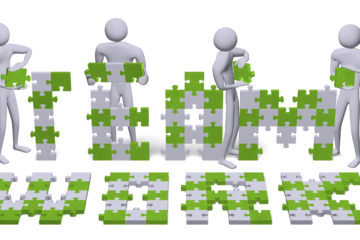Forget Amazon, Facebook, Apple and Google (the “big 4”). If PayPal decided to become a US bank, it could be the biggest disruption in modern US banking history. Given its extensive customer reach, both direct and indirect, it is not hard to imagine it completely dominating retail banking in the United States. PayPal already owns a bank in Europe, based in Luxembourg.
A version of this article was previously published on Forbes.com (http://bit.ly/ForbesPayPal)
I don’t believe that there is a bank in the US with more reach than PayPal. This is evident by some key statistics from their website (stats for June 30, 2017), which show 210 million customers, inclusive of 17 million merchants. Granted, some of these could be located overseas, but even if you conservatively halve these numbers to account for that, it is still astonishing. You don’t have to be a customer to contribute to PayPal revenue either, as its merchant payments division Braintree holds 520 million cards on file. By example, chances are that if you use Uber, Netflix, Pinterest, Airbnb or some commerce applications in Facebook Messenger, you provide income to PayPal.
The big 4 generally have too many non-permissible activities to become bank holding companies, without having to shed significant business interests, due to strict US banking regulations. Yes, the big 4 can nibble away strongly at the banks’ payments business and loans, but without a banking charter, they will never be able to effectively raise low-cost deposits or tap Fed funding programs. That leaves PayPal, focused mainly on financial services, as the biggest non-bank competitive threat to US banks. The breadth of PayPal’s product range for retail customers already matches or exceeds what most small banks can offer. Should community banks be scared, with retail customers being their bread and butter? Right now most PayPal products are offered through partnerships with US banks, but could easily be pulled into their own bank.
Let’s look at some of what PayPal already offer to consumers. First, there is the standard PayPal account where you can accumulate a balance like a deposit account, add payment cards, and pay or receive money from friends – even internationally. PayPal also offers a prepaid debit card and a savings account. Then there is PayPal Credit, a reusable credit line available at the checkout of online stores. PayPal also offers a Credit Card, a Mobile Wallet, as well as Xoom and Venmo. The latter two highly popular with millennials.
If they convert every PayPal account into a consumer checking account, and market it as such (which they could do as bank), it will take business away from every single bank in this country. It is a very compelling value proposition for consumers. Many consumers would favor their PayPal checking account over their existing bank checking account, given its person to person payments integration (directly and via Venmo) and foreign transfers (directly and via Xoom). Where else can you transfer $100 to family across continents, paying just pennies, versus $35 upwards at banks)? You could argue that PayPal doesn’t offer mortgage and auto loans, but they could easily add that. With such a huge customer base to cross sell to, scale would be reached quickly.
Then there are PayPal’s small business offerings – traditionally the domain of community banks. They have a Business Debit Card and offer Business Loans. Merchants have the option of using PayPal Merchant Services to process all manner of payments such as Android Pay, Apple Pay, credit and debit cards. PayPal takes all of this one step further, providing credit to the “customers of its customers” (PayPal Credit to the customers of PayPal merchants at checkout). Then there is “PayPal Here,” a mobile payment system (a small card-reader that plugs into a smart phone). Therefore, in addition to attracting deposits and making loans, PayPal earn good fee income through payments fees. Fee income is a key component for a bank to have a competitive return on equity, an area where most smaller banks are struggling.
It is hard to ignore the strong and valued personal relationships at community banks. But, more and more customers prefer the ease of use of digital products and the integrated product range that an organization like PayPal can offer. However, it is not all lost for the smaller banks. As usual, there is always a silver lining (or two). Firstly, the relative cost of digital banking technology is reducing, and community banks are in the unique position to offer ‘the best of both worlds.” If combined through blending “real people” service with technology, community banks can compete against growing threats like PayPal (as well as the mega banks).
Secondly, there is strong momentum with application programming interfaces (“API”). By adopting an API approach, a smaller bank can partner with various specialist financial services providers and potentially offer the combined products and services that PayPal offers. All presented in one common digital banking portal of their own. For instance, it is unlikely that a bank without scale can bring their international transfer cost down to the level where they can compete with Xoom. Right now, their customer may go to Xoom for international transfers only. However, that might change in the future as PayPal offers more and more products and features. The community bank may eventually lose the customer. It can be prevented, by plugging in the desired service (Xoom or similar service provider) via an API into the bank’s own digital banking portal.
PayPal and many other forces are looming as a threat to the traditional banking model and industry. Yet, there are survival options for smaller and mid-size banks that are willing to adapt. Which makes you wonder: what are they waiting for? Time is not on their side, and the PayPal threat will not go away.
Disclosure: The writer owns a small amount of PayPal stock, as well as Banking and FinTech stocks.


